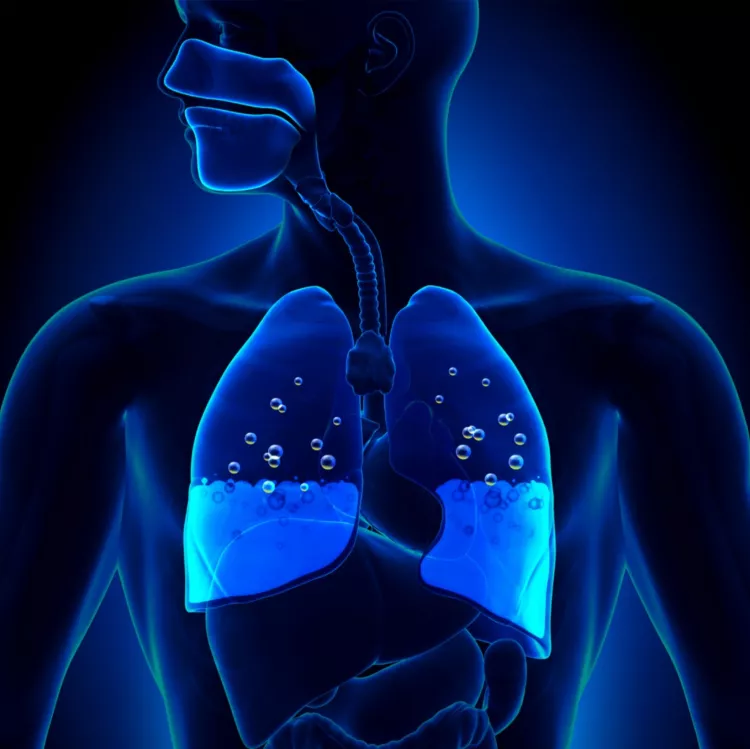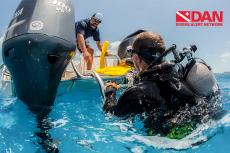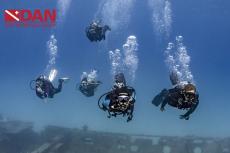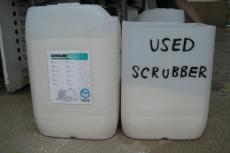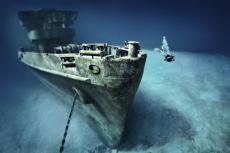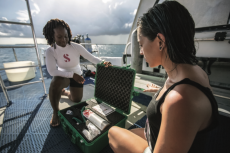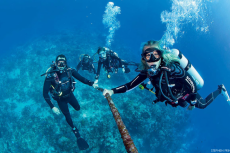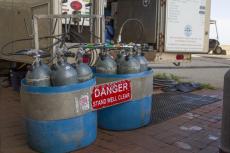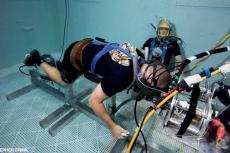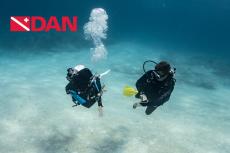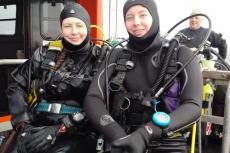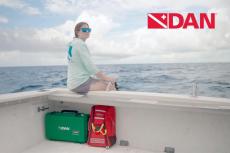IPE in Technical Diving — Risk & Response
While recent incidents have brought immersion pulmonary edema (IPE) into the limelight, it has always been a significant hazard to divers with pertinent risk factors, and doubly so for divers exploring overhead environments, or incurring significant decompression.
IPE is the abnormal leakage of fluid from the bloodstream into the alveoli, the microscopic air sacs in the lungs. Symptoms include shortness of breath, coughing up bloody sputum, and respiratory distress. Leakage into the alveoli results in fluid buildup in the lungs, and interrupts gas exchange, similar to drowning. It is important to note that fluid resulting from IPE comes from within the body, rather than from inhalation of surrounding water.
While the condition is most often the result of heart failure or other cardiac problems, there are other risk factors and it can occur without obvious medical cause, and in otherwise healthy individuals. IPE has presented in individuals who are young, healthy and fit, and the risks of IPE may be exacerbated by some diving conditions. Underwater, the symptoms of IPE can cause serious injuries or fatalities. Know the risks and keep yourself safe in the water.
Risk factors and mechanisms
IPE is a relatively uncommon condition that was first reported as “cold-induced pulmonary edema” in 1989. Since then instances of the condition have been reported in warm water, but exposure to cold water remains a risk factor. Medical risk factors include cardiac disease, hypertension, age and diabetes.
Activity and environmental risk factors include cold water exposure, high-intensity exercise, and difficult work of breathing, like you would experience with a high-density breathing gas at great depth, or from a poorly performing regulator. In healthy individuals, the primary concerns are activity-based and environmental risk factors. Some experts believe that IPE can be caused by high-intensity exercise or poor work of breathing because a strong, forced inhalation against resistance may cause the lungs to respond by leaking fluid out of the capillaries and into the alveoli.
The primary cause of the condition is hydrostatic pressure in the pulmonary capillaries caused by immersion due to the shunting of blood to the core through peripheral blood vessel constriction. This can be exacerbated by cold, which causes peripheral vasoconstriction. The combination of the two factors, combined with negative pressure breathing (or breathing against resistance), may increase pressure difference between the capillaries and the alveoli sufficiently to cause fluid leakage into the alveoli. Some researchers contend that some individuals may be abnormally predisposed to IPE, either by left-ventricular hypertrophy, or by genetic predisposition, but these risk factors have yet to be confirmed.
Emergency response
Should you experience symptoms of IPE during a dive, it is imperative that you end the dive immediately, or as rapidly as possible. For divers in overhead environments, it is advised that they exit the environment as quickly as possible, without exacerbating their symptoms with avoidable exercise.
Being towed by a buddy, or using a scooter, may effectively lower your exertion levels and avoid symptom worsening. Divers with significant decompression obligations should minimize exertion, be monitored by their buddy, and proceed to exit the water as quickly as possible, modifying gradient factors or skipping some decompression entirely, should their symptoms being to worsen.
Once a diver is on the surface, they should breathe 100 percent oxygen, and be transported to immediate medical evaluation. Prehospital treatment may include CPAP if symptoms are serious, or begin to worsen. Symptoms of IPE often resolve once a diver has exited the water, but an underlying cardiac issue may have initiated the event, and physician must determine if there is an identifiable cause for the symptom onset.
Fitness to dive
Individuals who experience IPE must be evaluated on a case-by-case basis, and the cause of their condition, if any, should be identified and remedied. The majority of young and healthy divers who experience IPE can return to diving with proper precautions, and a thorough cardiac evaluation.
Individuals who have known or potential cardiac disease require more scrutiny before being cleared to dive. These individuals should have evaluations prior to diving to ensure that they have do not have heart valve problems, blockages in their coronary arteries, as well as any other cardiac risk factors. Any diver who experiences recurrent episodes of IPE should refrain from returning to diving, and any individual who experiences IPE, even if cleared to dive again, should return to technical diving slowly and with appropriate considerations for potential future return of symptoms.
For more information on IPE and diving, visit DAN.org/Health
- Log in to post comments


